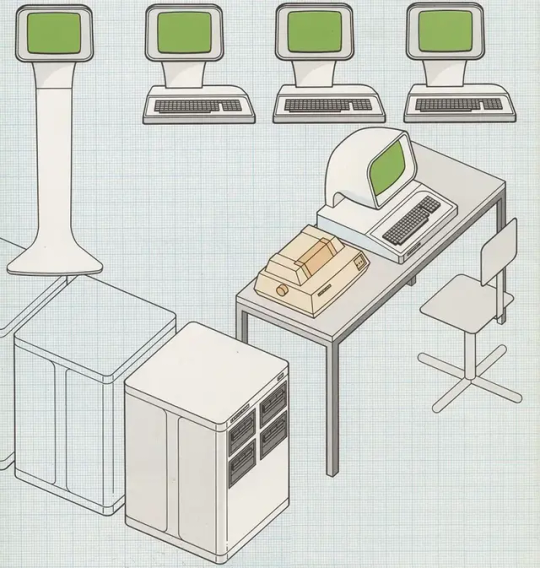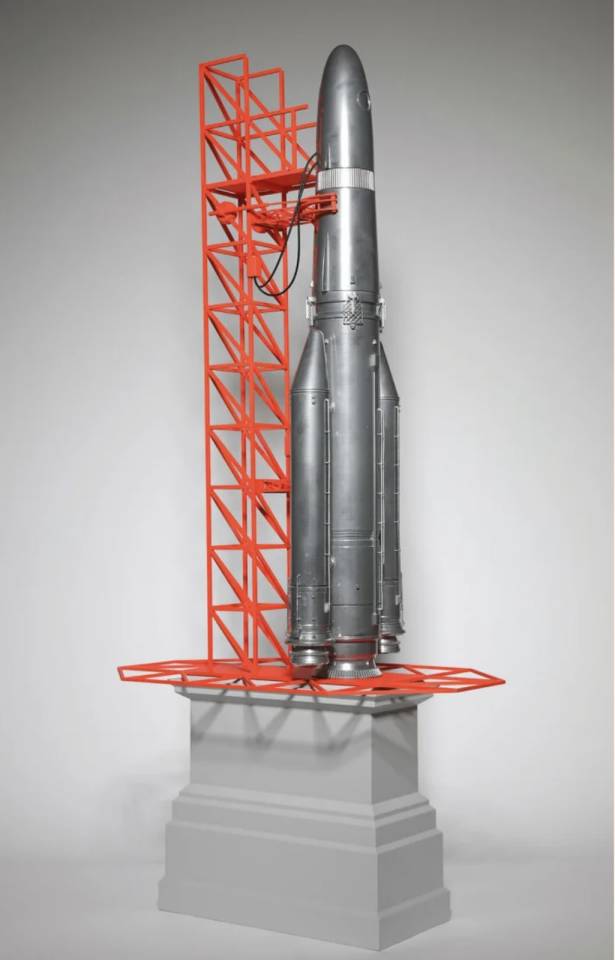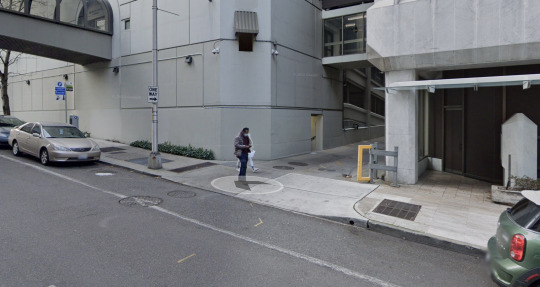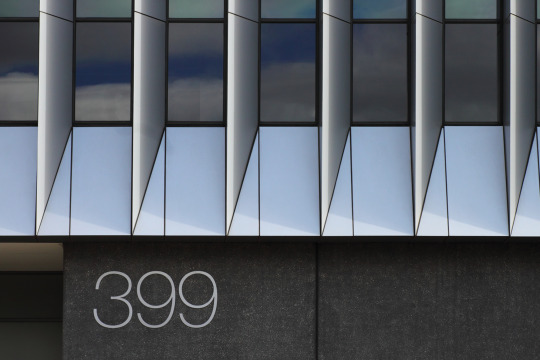Text
Most of the best sci-fi is confused and confusing. Look at Jupiter Ascending. 2001: A Space Odyssey is mad weird. Also, a classic.
Angela Wirecutter in an article for Wired, on Francis Ford Coppola's new film: The More People Say 'Megalopolis' Is Unsellable, the More We Need to See It.
#quote#science fiction#sci-fi#jupiter ascending#2001 a space odyssey#angela watercutter#wired#film#cinema
1 note
·
View note
Text
youtube
1 Broadgate - Lowering the Fulcrum, a video from the builders, Sir Robert McAlpine, of the 1 Broadgate project:
Part of the design brief for 100 Liverpool Street was to provide a level connection within the mall through to the future 1 Broadgate project which involved lowering the mall by 1.5 metres and, in conjunction with the artist, the decision was taken to lower the Fulcrum to sit on a new lowered base.
After discussion with the artist and the City of London Planning Committee it was decided to lower the Fulcrum insitu to preserve the integrity of the sculpture. This not only presented an engineering challenge but also a significant logistical challenge as it was in the centre of the main pedestrian exits to the station that couldn’t be closed.
The engineering solution involved installing new piled foundations under the Fulcrum to support a new lowered structural steel support frame. Using large, inverted jacks, to temporarily support the fulcrum and its base slab, the artwork was first lifted clear of the existing supports and then incrementally lowered onto its new base. This carefully monitored process took place over a period of two days and, to ensure the artwork remained upright during the lowering process, ballast was installed around the base of the fulcrum to lower its centre of gravity.
#video#london#fulcrum#richard serra#sculpture#engineering#builder#mcalpine#city of london#public art#Youtube
2 notes
·
View notes
Text

Fulcrum by Richard Serra, from a post in 2015 marking the anniversary of Áfangar, the artist's site-specific installation in Vesturey, Iceland.
Fulcrum is located in London's Broadgate complex, just to the west of the lower entrance to Liverpool Street Station.
0 notes
Text
Walking in London is when I feel most certain. I know the fastest routes, the most scenic streets, the alleyways that circumvent rows of busy shops, the quickest walk to a cinema or museum where you can sneak into the toilets with ease. I know that the Hungerford Bridge is where you should stand if you fear London has lost its lustre, the terraces at Richmond are a European Summer Holiday when you cannot afford one and the Night-Bus is where your best and worst thoughts will form.
Lizzy Stewart, in An Ode to Women Who Walk, From Virginia Woolf to Greta Gerwig at LitHub.
#quote#london#walking#hungerford bridge#richmond#night bus#geography#literature#drawing#illustration
3 notes
·
View notes
Text

The Guardian, 25 March 2004, on the Scorsese VHS archive now at the University of Colorado, Boulder:
Martin Scorsese has quietly made public a very private preoccupation. More than 50 storage boxes hold thousands of VHS tapes that contain films and television programs Scorsese recorded directly from broadcast television.
… although it turns out not to be just Scorsese himself:
In each week’s TV Guide, he would note the movies and shows that caught his interest. A full-time video archivist in Scorsese’s New York office would then record the telecasts from a kind of audiovisual hub made up of multiple VCRs and monitors, which could often be active at all hours. The tapes were meticulously labeled, cataloged initially using a library-like card system and later a computer, and filed away for Scorsese’s personal viewing and research.
Having a full time employee to do your videotaping sounds like a nice position to be in.
The broadcast recordings include commercials, bumpers and other marginalia, which [Erin Espelie, an associate professor of film at the University of Colorado Boulder] said “are as fascinating, in some cases, as the originally desired main recording events. Because of the way television lacked backups, these VHS tapes may provide some of the only copies of these ‘interstitial’ materials.”
#image#vhs#martin scorsese#video#archive#interstitial materials#film#cinema#television#university of colorado#library
1 note
·
View note
Text

Swedish Medical Center O₂ Tanks, Seattle, Washington, by Studio SC:
As passersby move past the structure, the site’s blue vertical security fence slats interact with the graphic bubble pattern behind creating an animated sequence and the illusion of moving air and water.
9 notes
·
View notes
Text
Swedish Medical Center O₂ Tanks, Seattle, Washington, by Studio SC:
Wrapping around Swedish Medical Center’s two oxygen tanks is Studio SC’s dynamic graphic kinegram installation inspired by the act of breathing and elemental qualities of air.

7 notes
·
View notes
Photo
A five year old post, so sadly you cannot go and see the exhibition, but this was a good source for a reblog.
CNN has a good overview with some pictures from the exhibition.

Pierre Cardin, a fashion designer known for his futuristic creations, said “the cosmos has always attracted me, even before the Space Age…I always imagined that man would one day walk on the moon.” On July 20, 1969, Cardin was on the Champs-Elysées, surrounded by thousands of anxious and excited people watching the Apollo 11 footage, “waiting for the dream to become a reality.”
Just a few months after this momentous event, Cardin toured the @nasa Manned Space Center in Houston where he had the privilege of trying on an astronaut’s pressure suit. This was a moment that Cardin later said is his most beautiful memory.
Opening today on the Apollo 50th anniversary, Pierre Cardin: Future Fashion encapsulates the excitement surrounding the moon landing with a retrospective of designs envisioning a bold Space Age future. See it now through January 5, 2020.
Pierre Cardin wearing Apollo 11 space suit, 1969. (Photo: Courtesy of Archives Pierre Cardin. © Archives Pierre Cardin)
139 notes
·
View notes
Text

'naty abascal, space suit by nasa, new york, december 21, 1964, photograph by richard avedon' in expedition: fashion from the extreme - thames + hudson (2017)
68 notes
·
View notes
Text

A diagram of Holborn terminals, including one which inspired the design of the Holborn 9120.
Riccardo Bianchini, Inexhibit.com:
the system comprised a single-piece keyboard-monitor console and a massive external unit that contained two floppy drives (an optional 30MB hard disk was also available).
There are few doubts that the distinctive hallmark of the Holborn 9100 was its periscope-like 12” built-in monitor protruding from the console.
Image: Technisch Museum
1 note
·
View note
Text
Gonogo, a proposal for Trafalgar Square’s Fourth Plinth, by Goshka Macuga.

23 notes
·
View notes
Video
Pigeon, Man, Tranquil Vale, Blackheath, Lewisham, 1990, 90c6-02-33 by Peter Marshall
A man. A pigeon. A van. London.
#image#photo#flickr#1990#london#van#man#pigeon#blackheath#peter marshall#colour negative#tranquil vale
4 notes
·
View notes
Photo

At the Aerospace Projects Review Blog, Grumman Advanced Stealthy Penetrator: Early CAD:
[Included] is a PR image showing, presumably, a Grumman engineer at work on a 3D CAD diagram of the GASP. This image dates from no later than 1984, so the CAD system was a pretty early one (though by no means the *earliest* CAD system).
#image#photo#cad#computer aided design#1980s#stealth#aircraft#design#screen#reflection#ers srf#sho srf#prject
0 notes
Photo

A suggested office layout for freelancers, from Practical Graphic Design Techniques, 1991, edited by Lydia Darbyshire. via Present & Correct.
1 note
·
View note
Text
Why I Use An iPod in 2024
Please forgive the YouTube-inspired title. It's a joke. Mainly.
Anyway, yes, I do actually use an iPod (specifically, a fourth generation (2004, click wheel) 20 GB model) as my music player when I'm out and about, or occasionally when lounging around the house. There are a few reasons for this that work for me that probably don't for most people.
Firstly: I still use wired headphones (over-ear at home, in-ear outside). The iPod has a 3.5mm headphone jack, obviously; equally obviously, my iPhone (like almost all recent phones) does not. Sure, there are convertors, but that's faff. So while I still avoid dragging myself into the 2020s and use Bluetooth, the iPod is actually more convenient.
As a digression: it's really nice being able to use my pocket computer without a wire getting tangled up in it. Maybe this argues for AirPods, but I noticed because of the iPod, so why not just keep using it?
Secondly: I listen to albums. All the way through, in artist-decided order. Old ones, that I've had for years, usually. I also don't use Spotify, Apple Music, or any other streaming source. So it's not important for my music device to actually be connected to the internet, ever. An occasional sync to put music on isn't the worst thing, especially as my tastes change glacially nowadays (and have for years).
Like I said, these are almost certainly unusual preferences now, at least if the flood of Spotify years in review and wireless buds are any indication. If I get AirPods, I'll probably switch back to music on my phone (which certainly handles compilations better). Still, it's nice having the music I own on a device, and that's far less likely to change than headphone technology.
I will say: if you're like me, and listen to albums (or rarely-changing playlists) on wired headphones, consider a dedicated device (either an old iPod, or something like the Shanling M0 Pro, which looks like an iPod nano 6th gen, but better). It might work for you, too.
#text#ipod#technology#music listening#headphones#personal tech#everyday carry#that one was a stretch
7 notes
·
View notes
Photo

Emmanuel Monzon, from his Urban Sprawl Emptiness series, 2016 (via)
I was wondering whether I could identify where the photo was taken, given the overhead power lines; they’re not seen very often in US cities. At first I tried San Francisco, but I found it in Monzon’s base of Seattle. Here’s a couple of Street View pictures taken from the middle of the road shown above.


In the first you can see the canopy, no longer reading Westin (Street View’s photos have it until May 2019, but not after July 2021), along with a trolleybus (using those overhead lines) and a well-timed cigarette break.
In the second, that open door that dominates the Monzon photo is open once more, along with the two access covers that make it clear this is definitely the right spot.
If nothing else, this shows that there is a good photograph to be made from seemingly uninteresting downtown walls and alleyways, if one can spot it.
#image#photograph#emmanuel monzon#interesting in boring#street view#google#google street view#location spotting
0 notes
